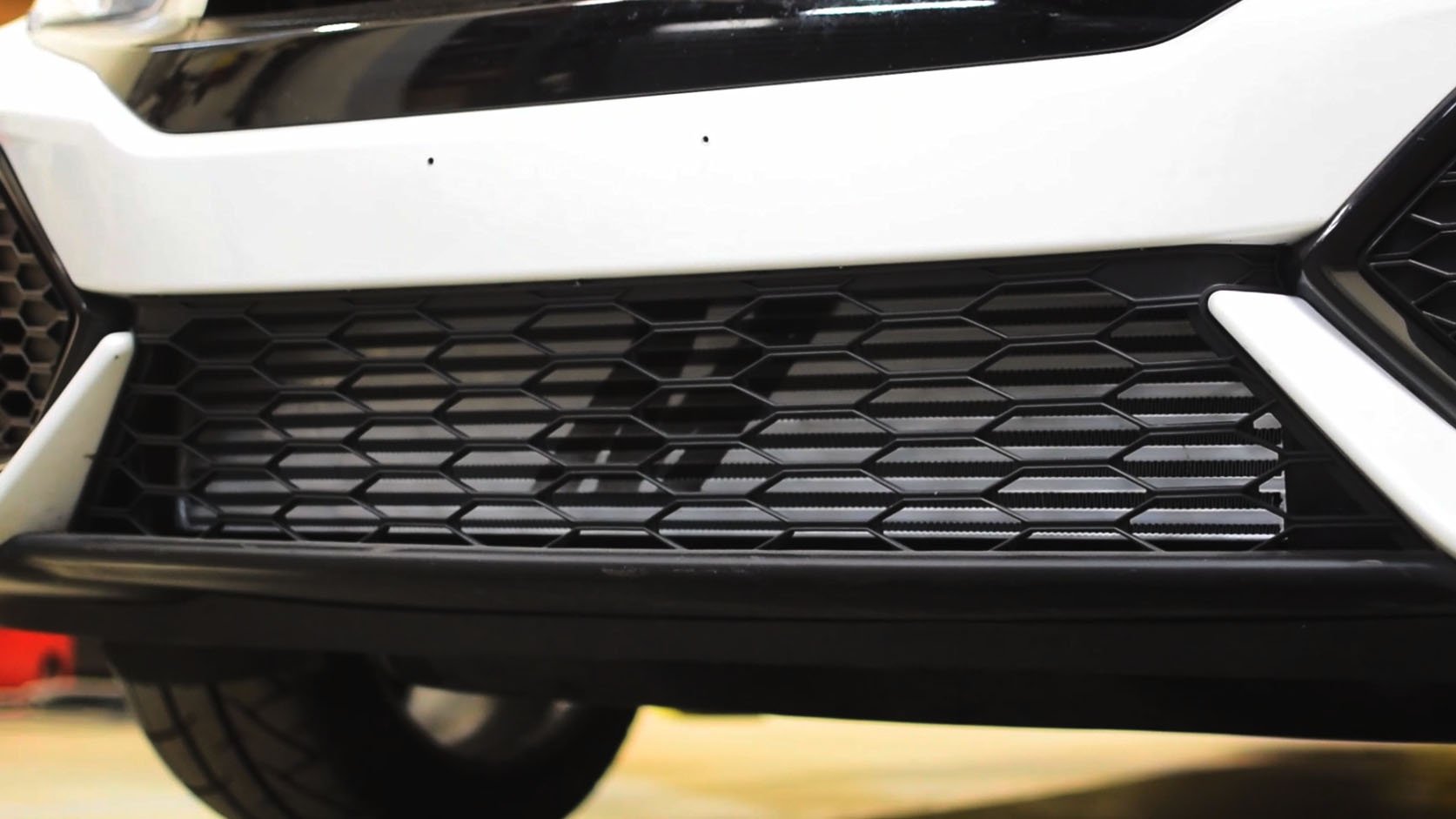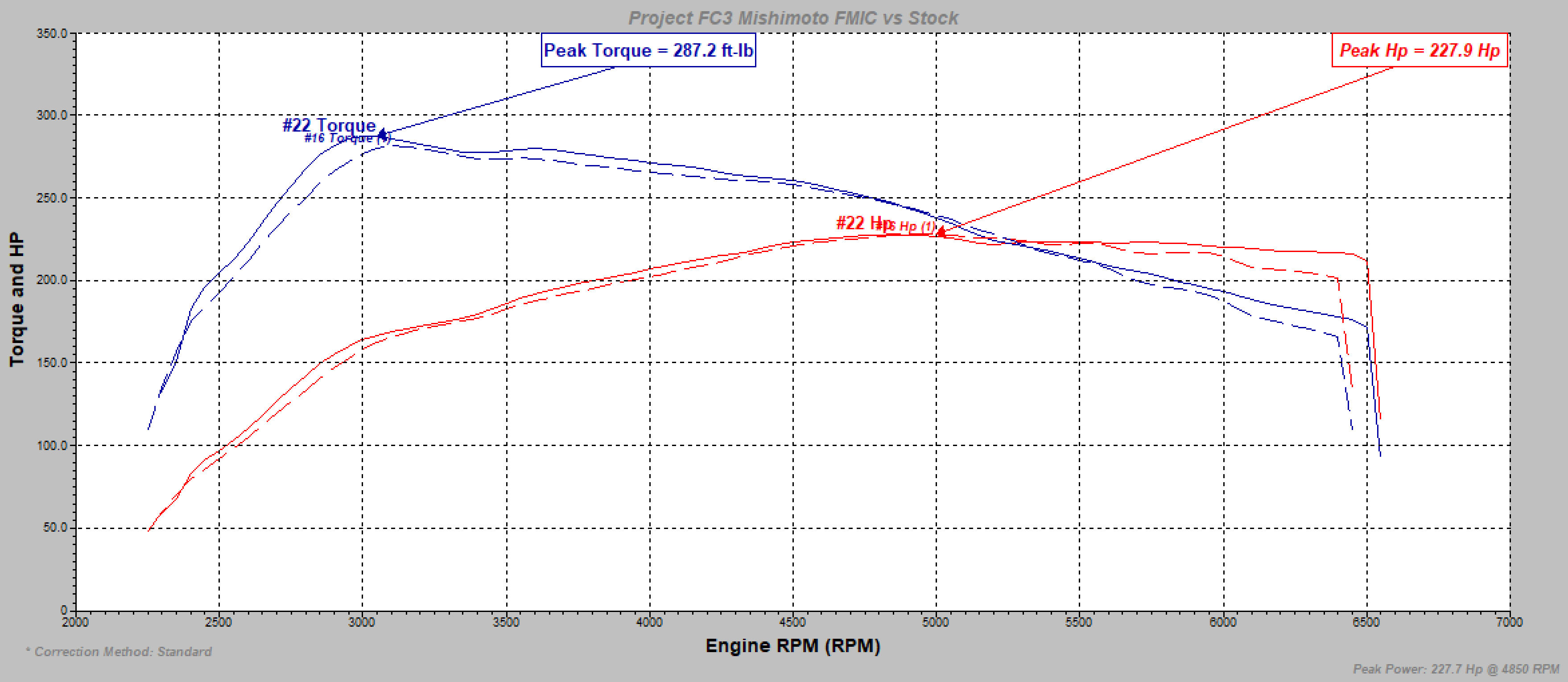

October 10th, 2023
2 min read
By JP Alonso

Here's what we have on the 2017 Civic Si: an aFe Turboback Exhaust, AEM Intake, and created a custom calibration through our KTuner device. The Honda is running great and has significantly improved in both power and torque, over stock. We're currently using 91 octane pump gas only. However, we've seen evidence that a better intercooler would help us out a lot. So the Mishimoto core, designed specifically for our Civic, was called to duty.
In the interest of gathering data and seeing exactly what all these parts do to the car, we left out the piping for now. We'll be using stock intercooler piping on this first test, then upgrading the piping separately so we can note the differences there as well.
Like I mentioned earlier, there was some evidence suggesting we really needed to upgrade the intercooler. We couldn't really push the car much further because the Honda knock control strategy was starting to step in. You can see on the dyno graph below that there were significant points at the end of the curve where the power would dip down quickly. This is due to the 10th gen Civic ECU retarding the ignition timing automatically based on intake air temperatures, among other things. When we're pushing the tiny stock turbo as much as we are, it requires us to spin it faster than MHI really intended it to be spun. As a result, the air heats up much more than at a lower boost level and the ECU pulls timing.

Considering the stock intercooler can barely cool off the boosted air with the stock boost settings, it was only going to get worse when we asked the turbo to do more. After looking into the stock intercooler after we took it off, it was no wonder why it couldn't cool well. The fin structure wasn't very dense and the fins that were inside we're not manufactured with an offset fin structure that forces the air to go through more of the fins. It had a more square fin design. Although this keeps the speed and pressure of the air up, it does a bad job of cooling the air as it passes through since the air is not coming into contact with the fins enough, which are ultimately transferring the heat in the boosted air to the outer fins that receive the cool air. There's not nearly as much heat transfer happening.

With the Mishimoto core, you can visibly see a much denser fin structure as well as offset fins. Although this design doesn't allow boost pressure to stay as high as it passes through the intercooler, the benefits outweigh that small disadvantage. The air cools down significantly more and by the time it gets done passing through the intercooler, it's a denser charge of air that's primed and ready to go into the engine. When it comes to making power, this same concept allows you to increase the ignition advance and run higher boost levels since the Mishimoto intercooler is allowing the cylinder to see more consistent, safer conditions with the cooler air.
.jpg?width=1080&name=MMINT-CIV-16SL%20(2).jpg)
|
.jpg?width=1080&name=MMINT-CIV-16SL%20(4).jpg) |
.jpg?width=1080&name=MMINT-CIV-16SL%20(5).jpg) |
Now for the good stuff. The first dyno graph is just bolting on the intercooler. It made some respectable gains, for sure. But the first thing you notice is the knock control at the top is immediately resolved. The power stays more consistent and straight instead of dipping like with the stock intercooler.
The second dyno graph is where the party really starts. With the addition of slightly more boost and increased ignition advance, the car responds very well and picks up a really nice bump in power and torque. Believe it or not, we experienced around 3psi pressure drop at the top of the rpm range, even though it picked up that much power. That goes to show you; colder, denser air, mixed with a more aggressive tune can outweigh a little turbo pressure loss. Although the pressure loss isn't ideal, we're not really worried about it with these kinds of results. The pressure did not dip at all in the low to mid range area which we're happy about.
Bolting on intercooler, no additional tuning.

Bolting on intercooler, additional custom tuning.

I'm the founder of Edge Autosport and I remember first getting into cars in high school. I read all the magazines, bought a bunch of technical books, and finally got to start wrenching around the age of 19. I really enjoy modding and being able to live out a passion is truly awesome. I wouldn't change a thing.